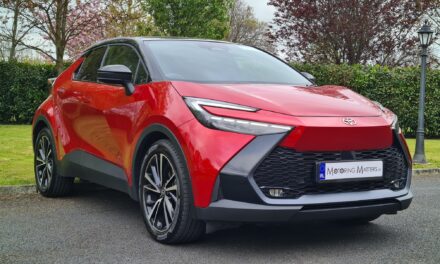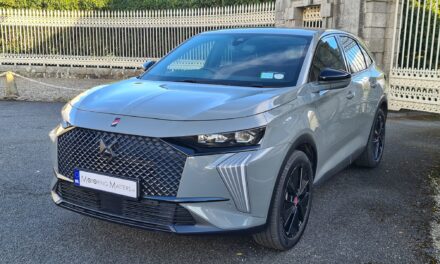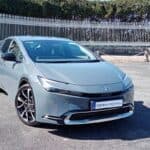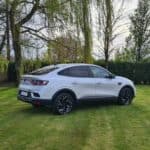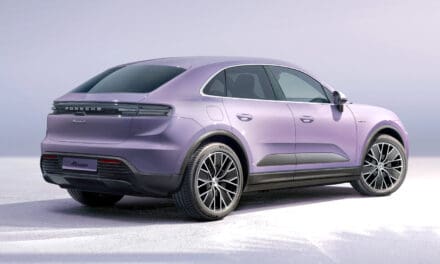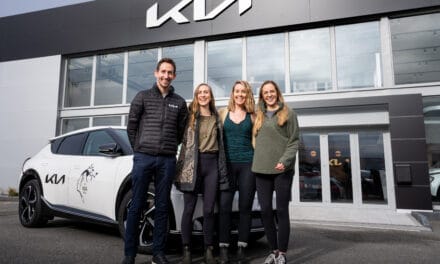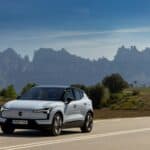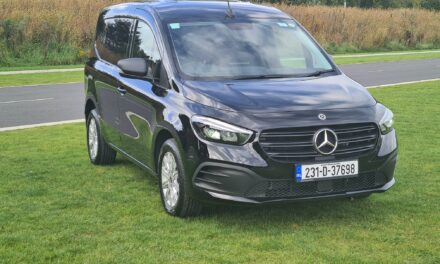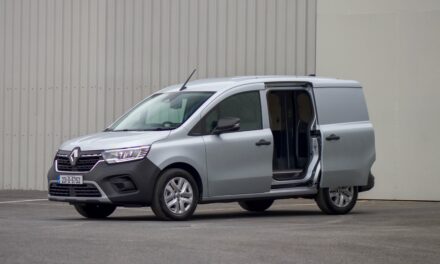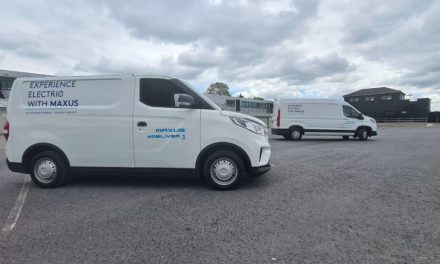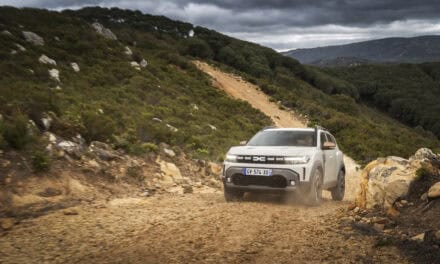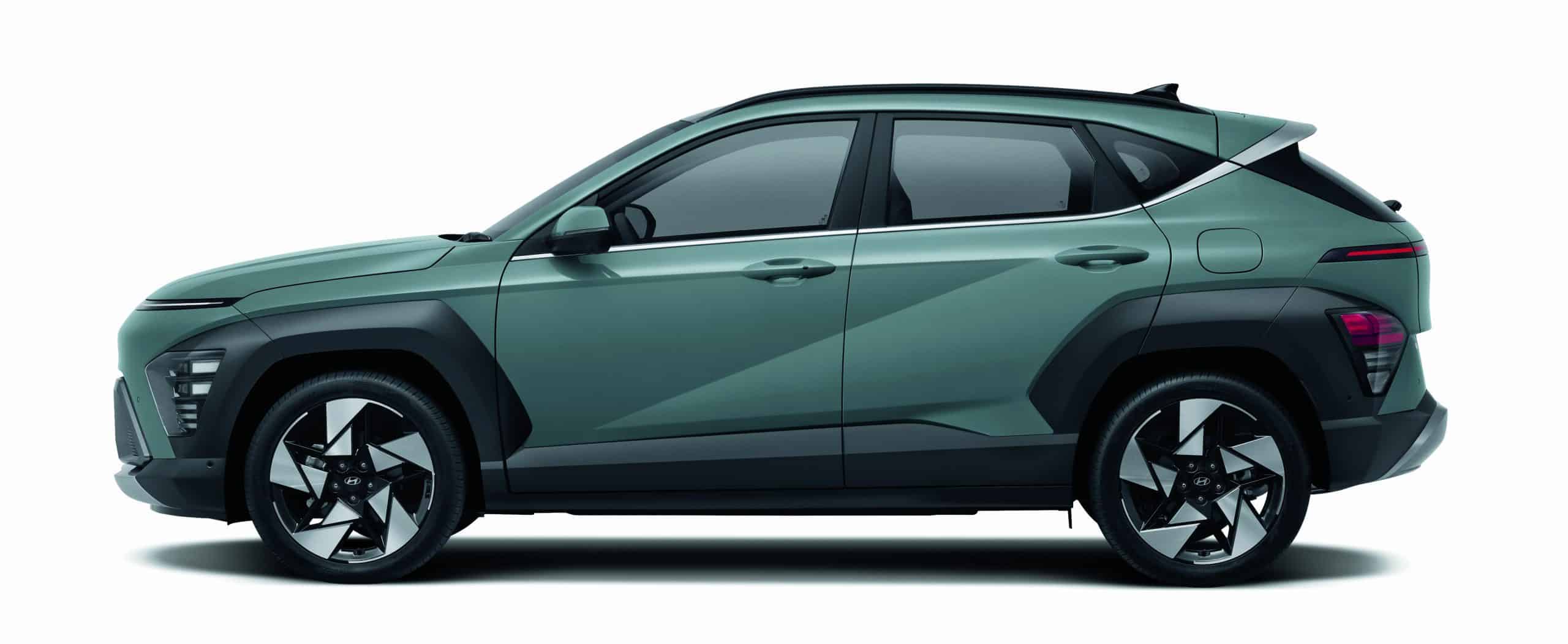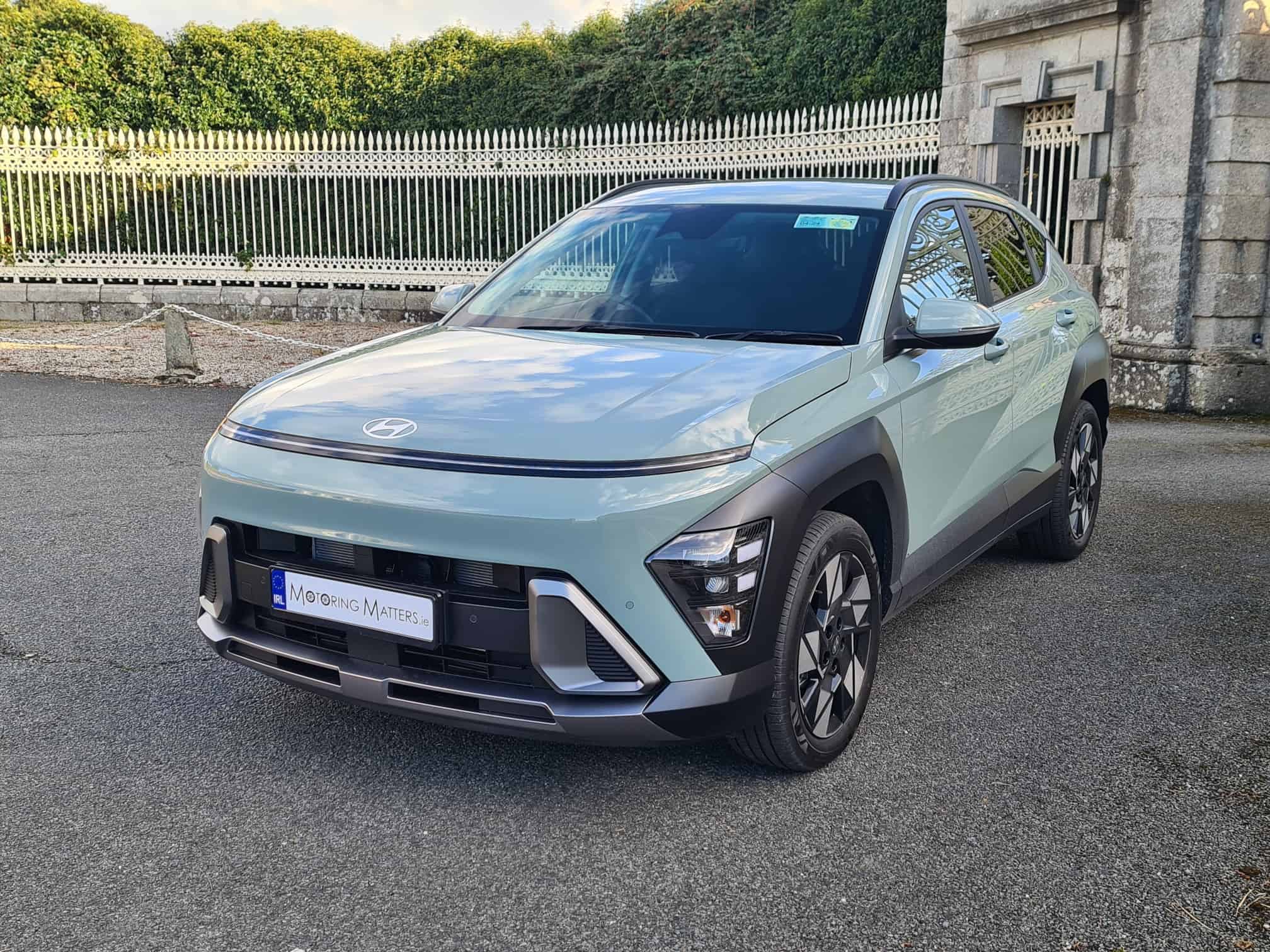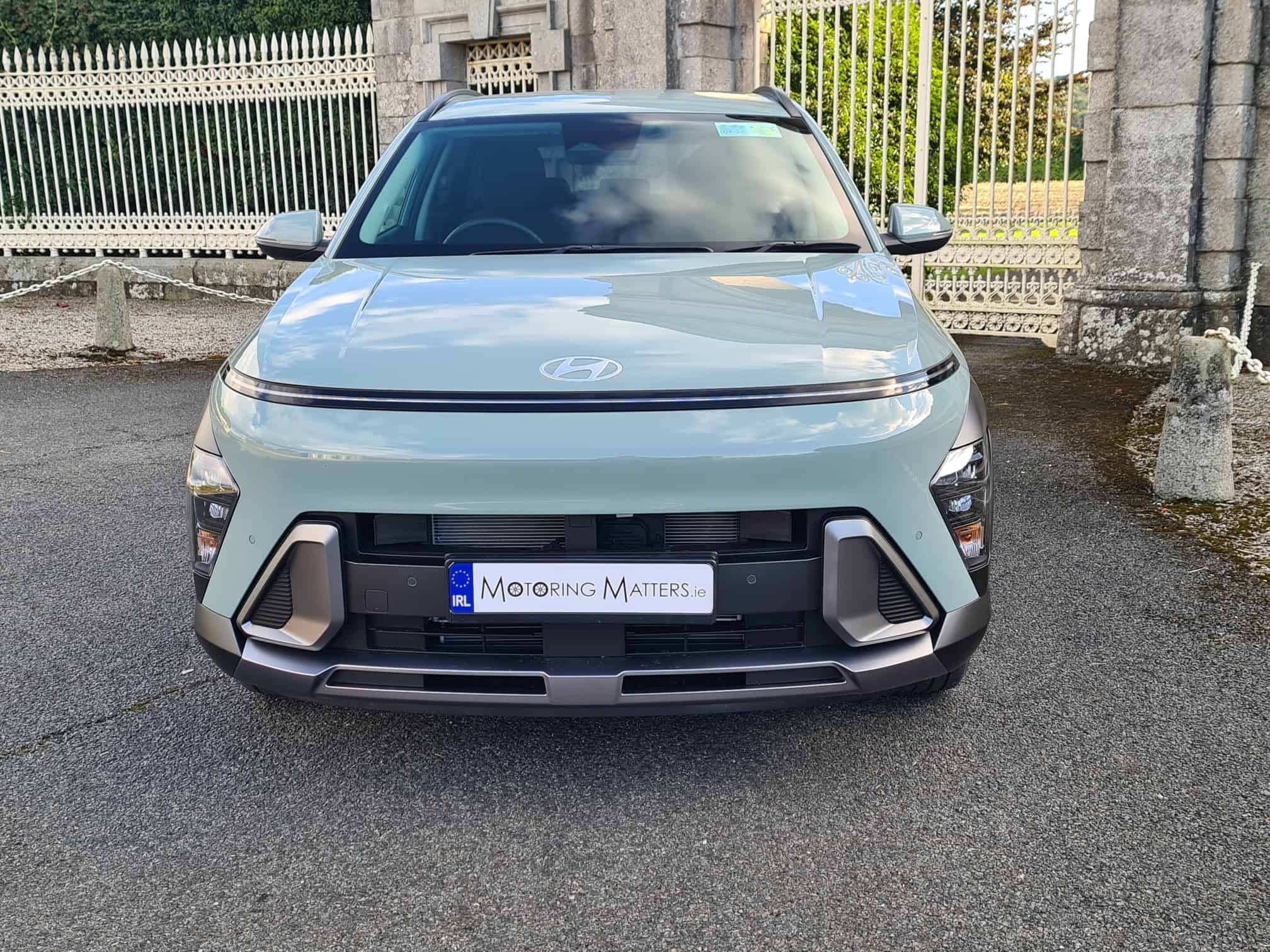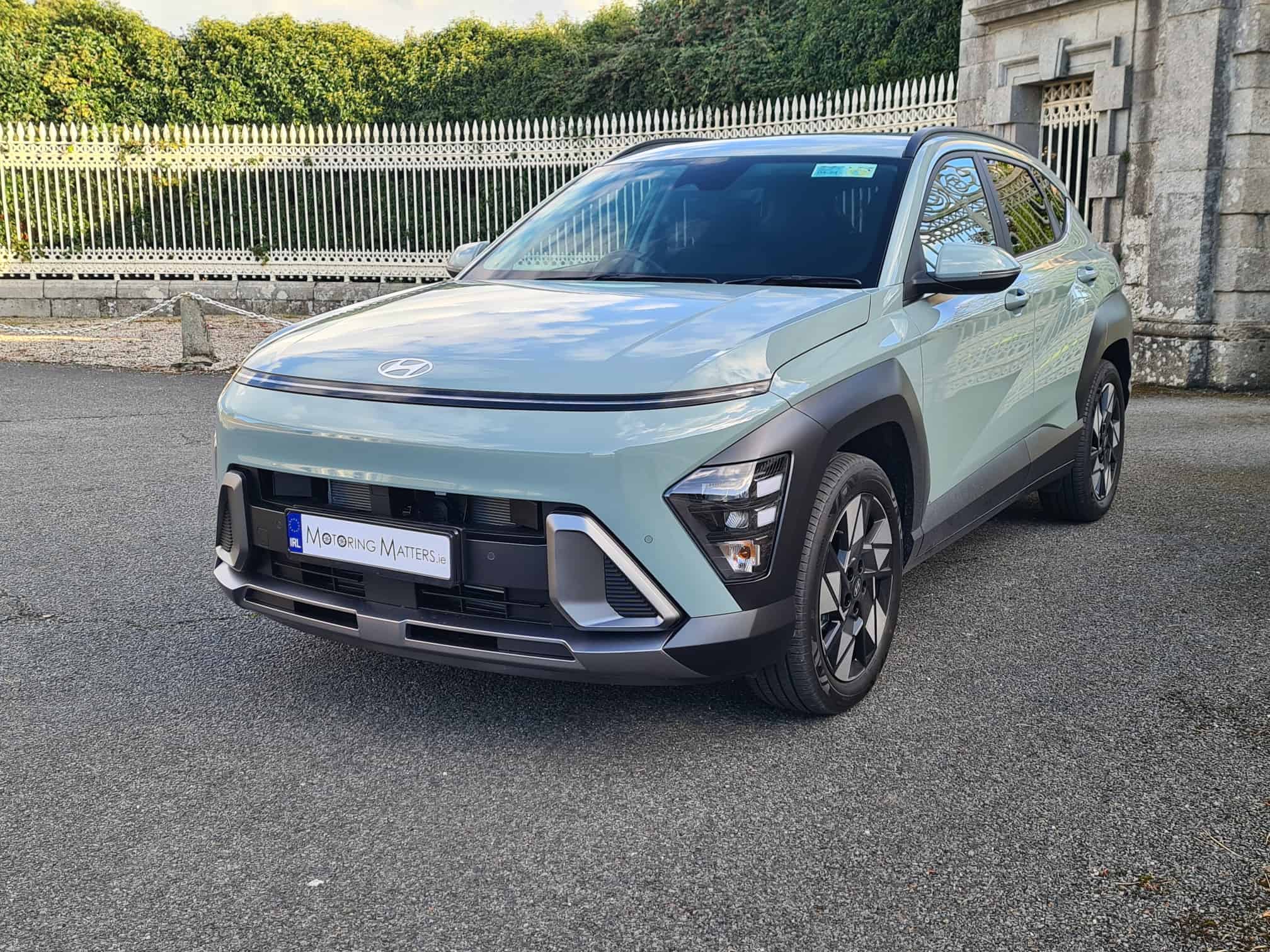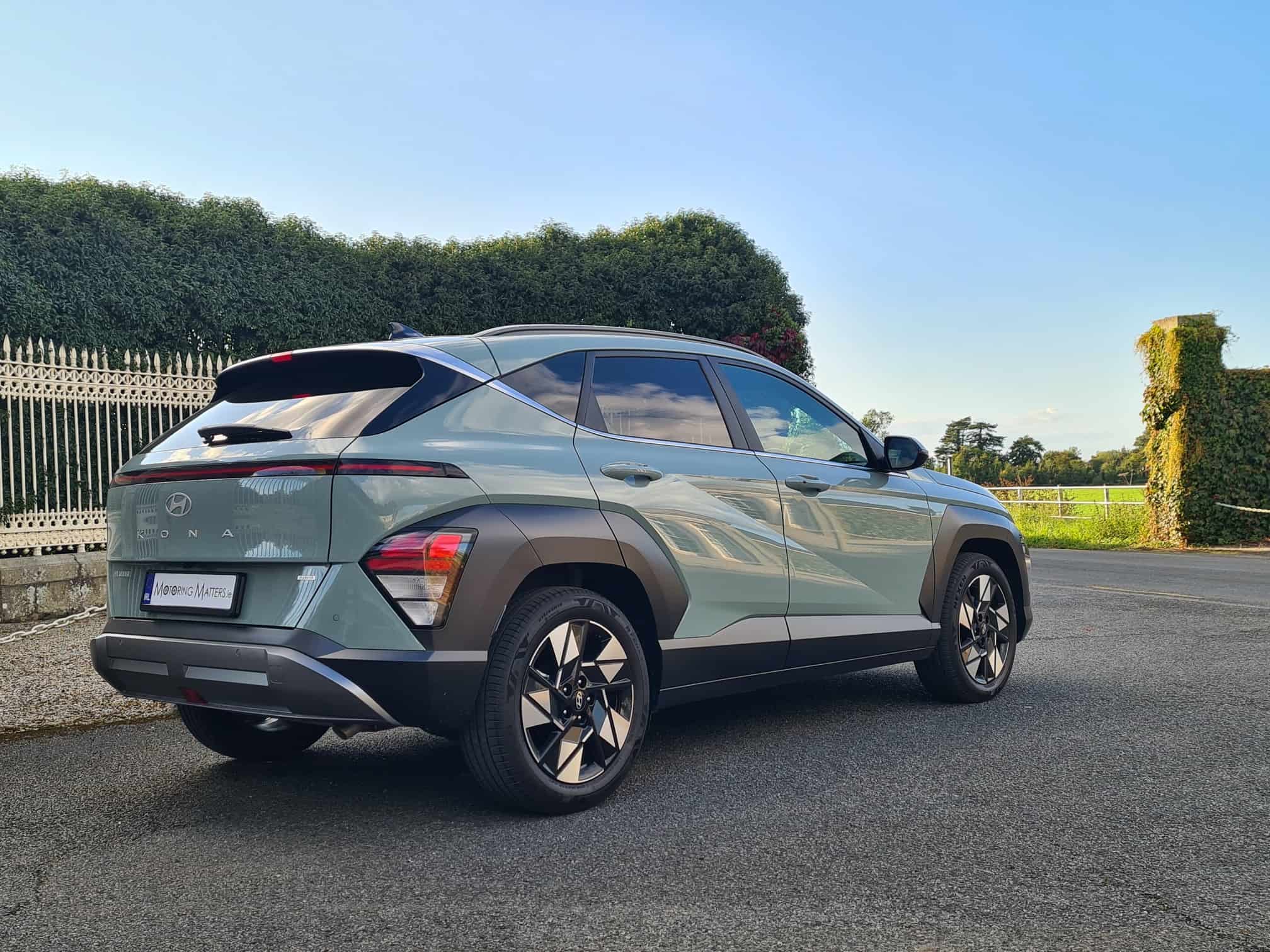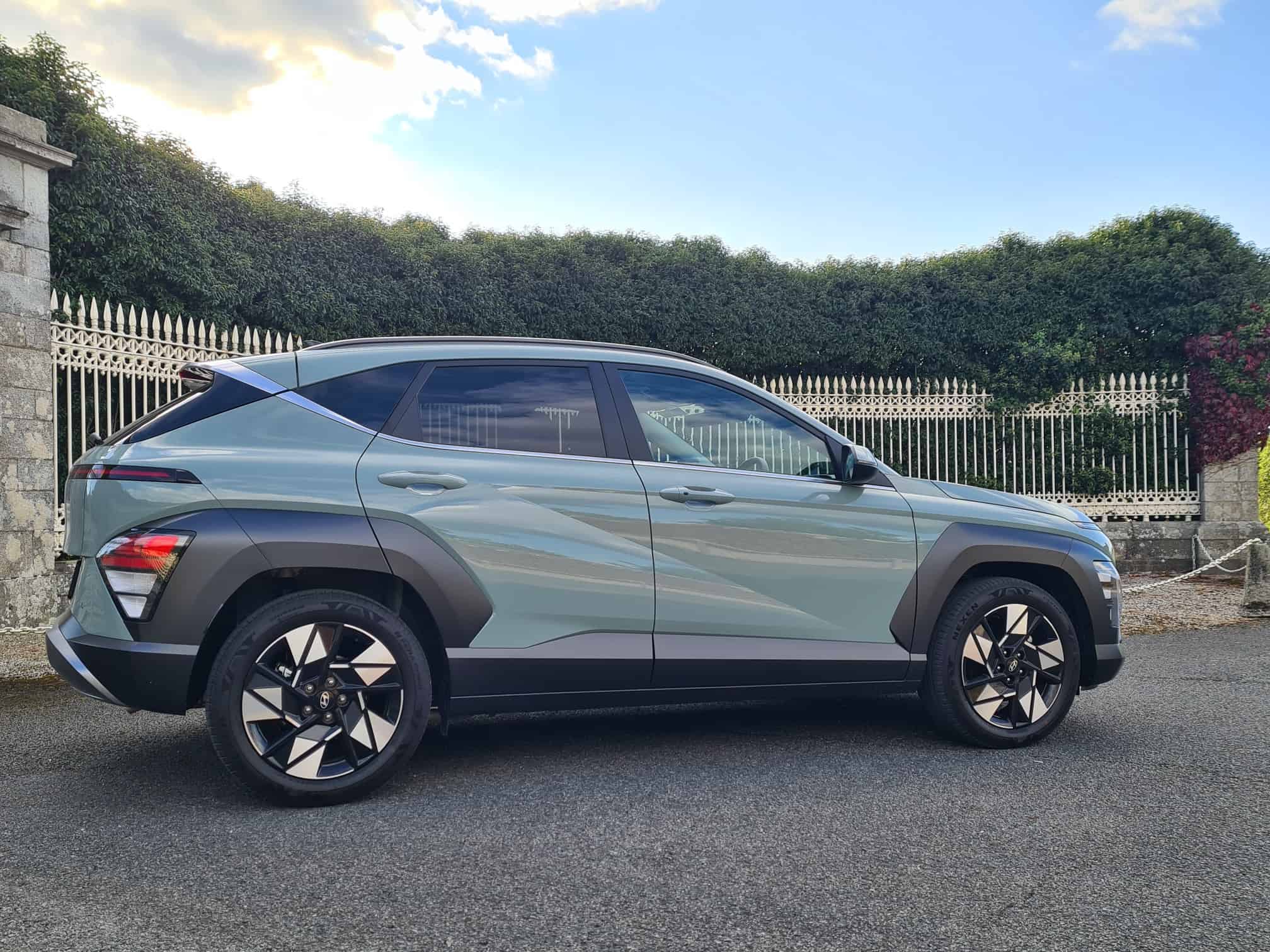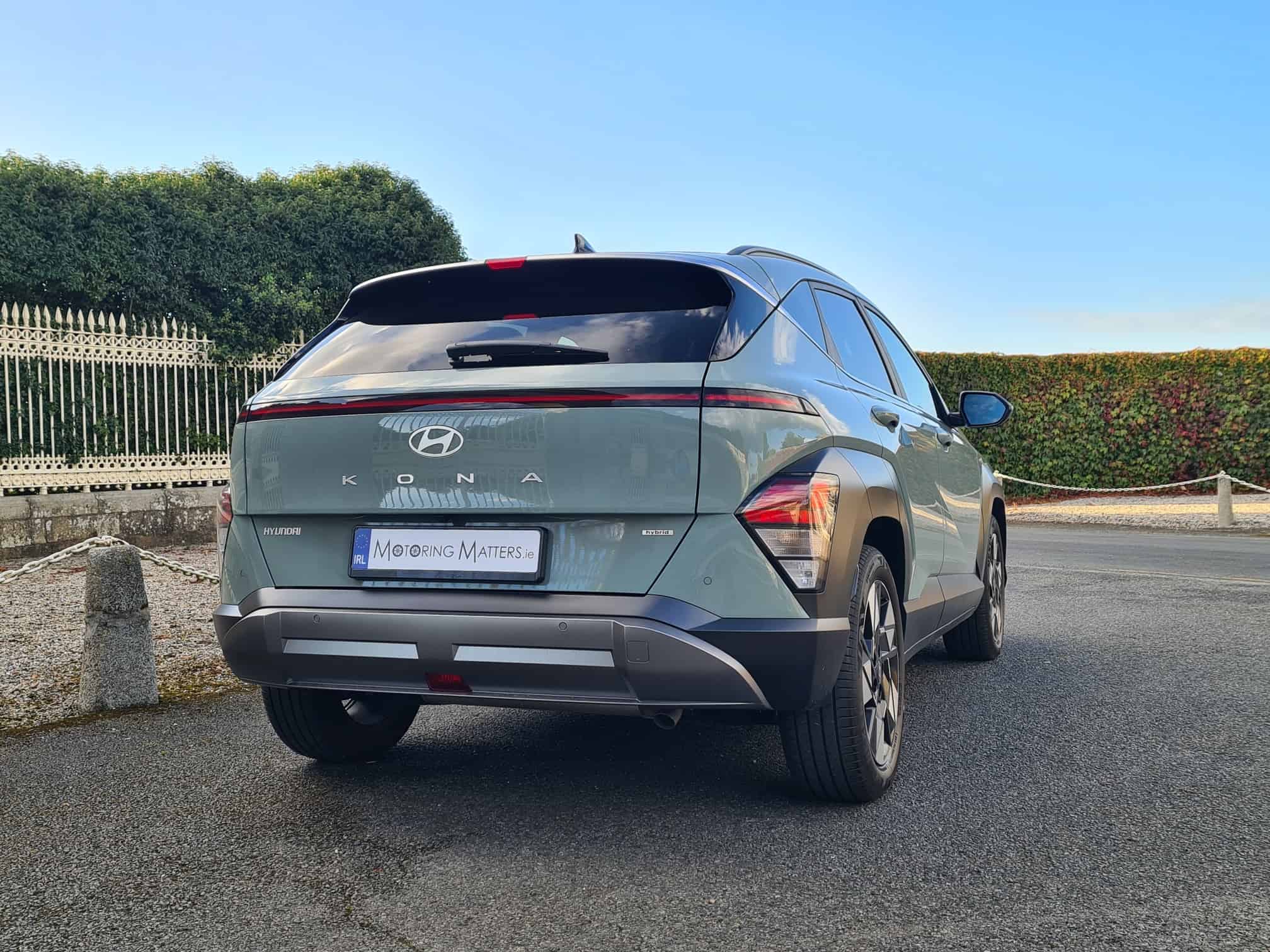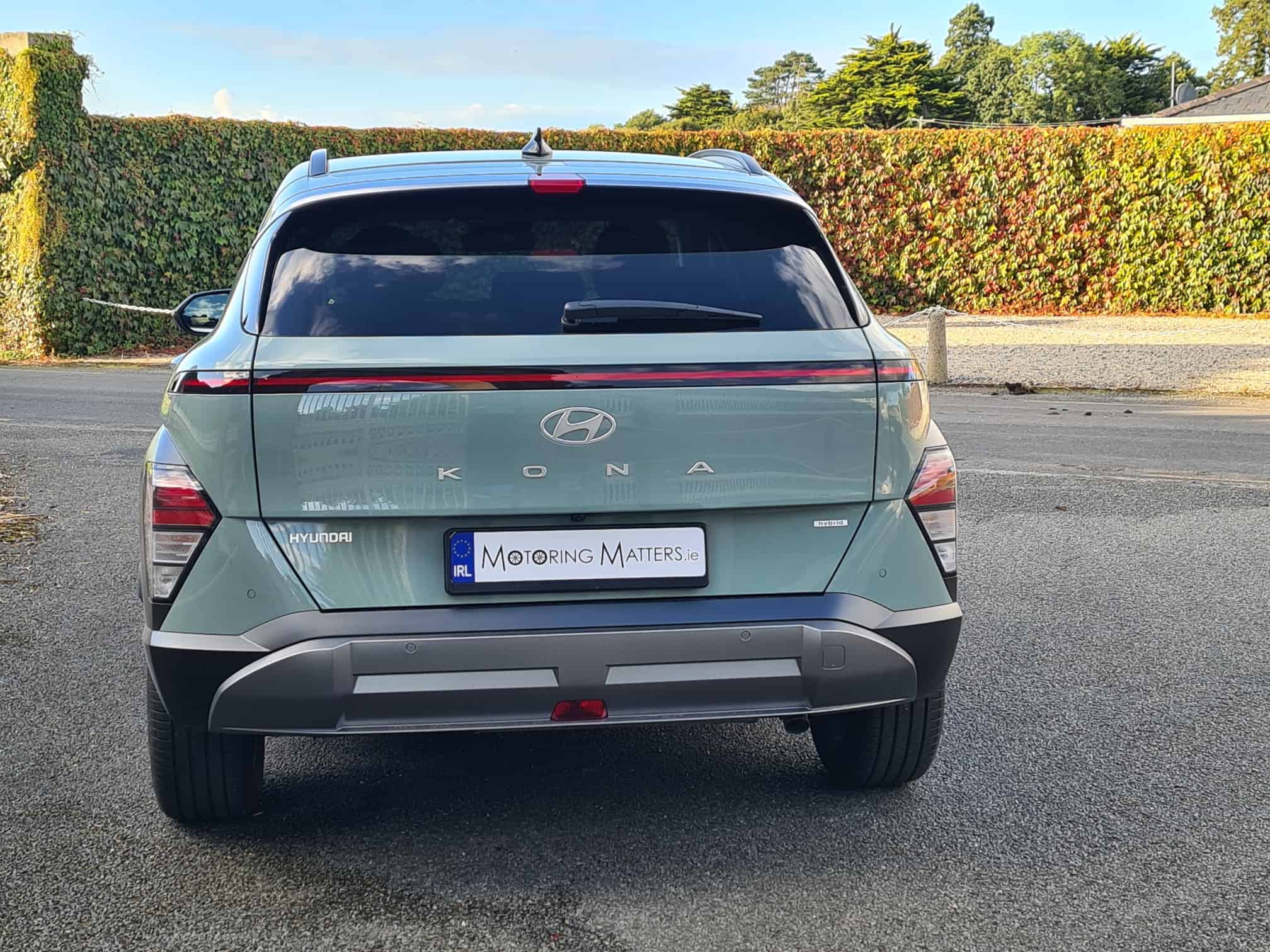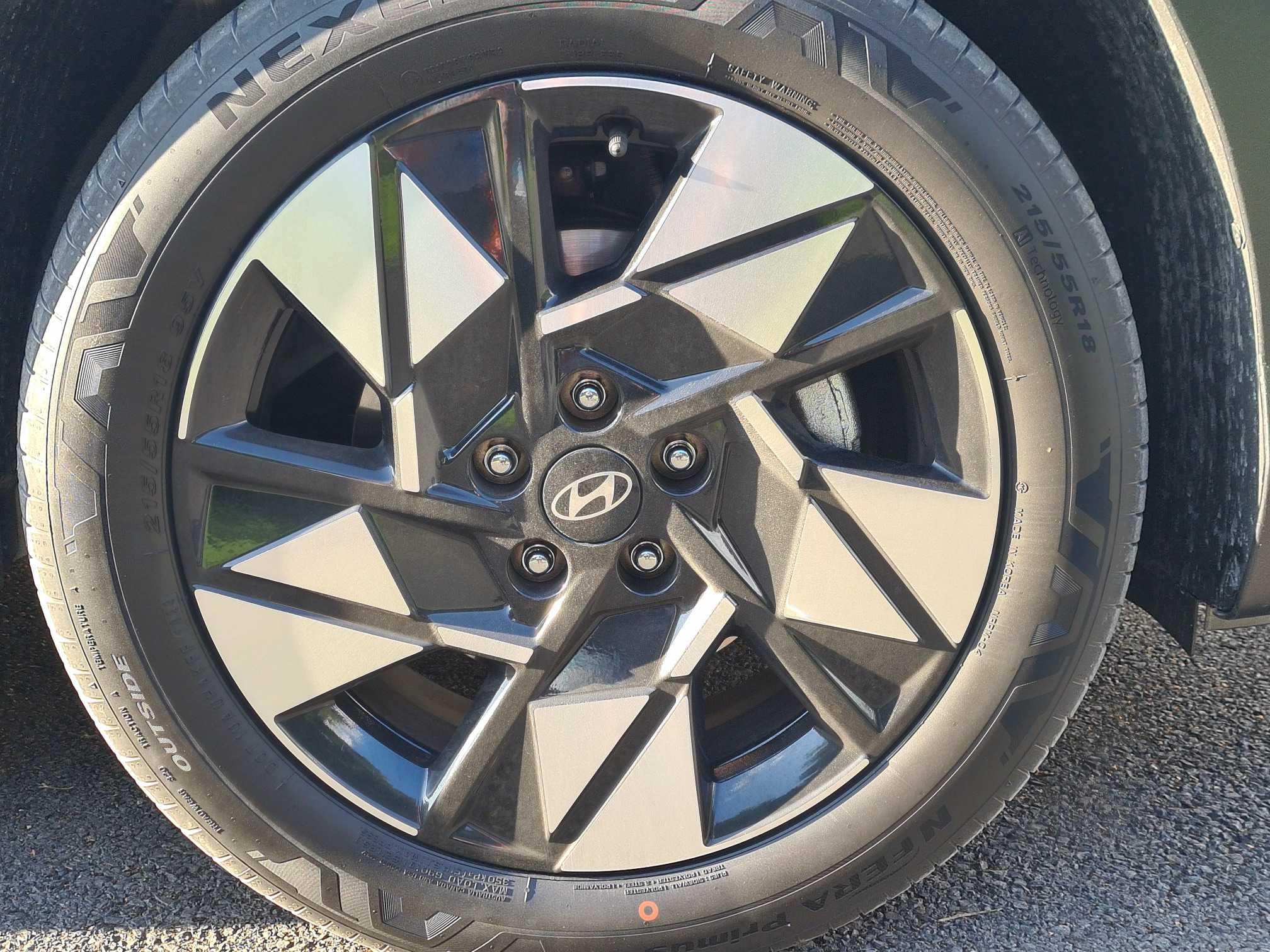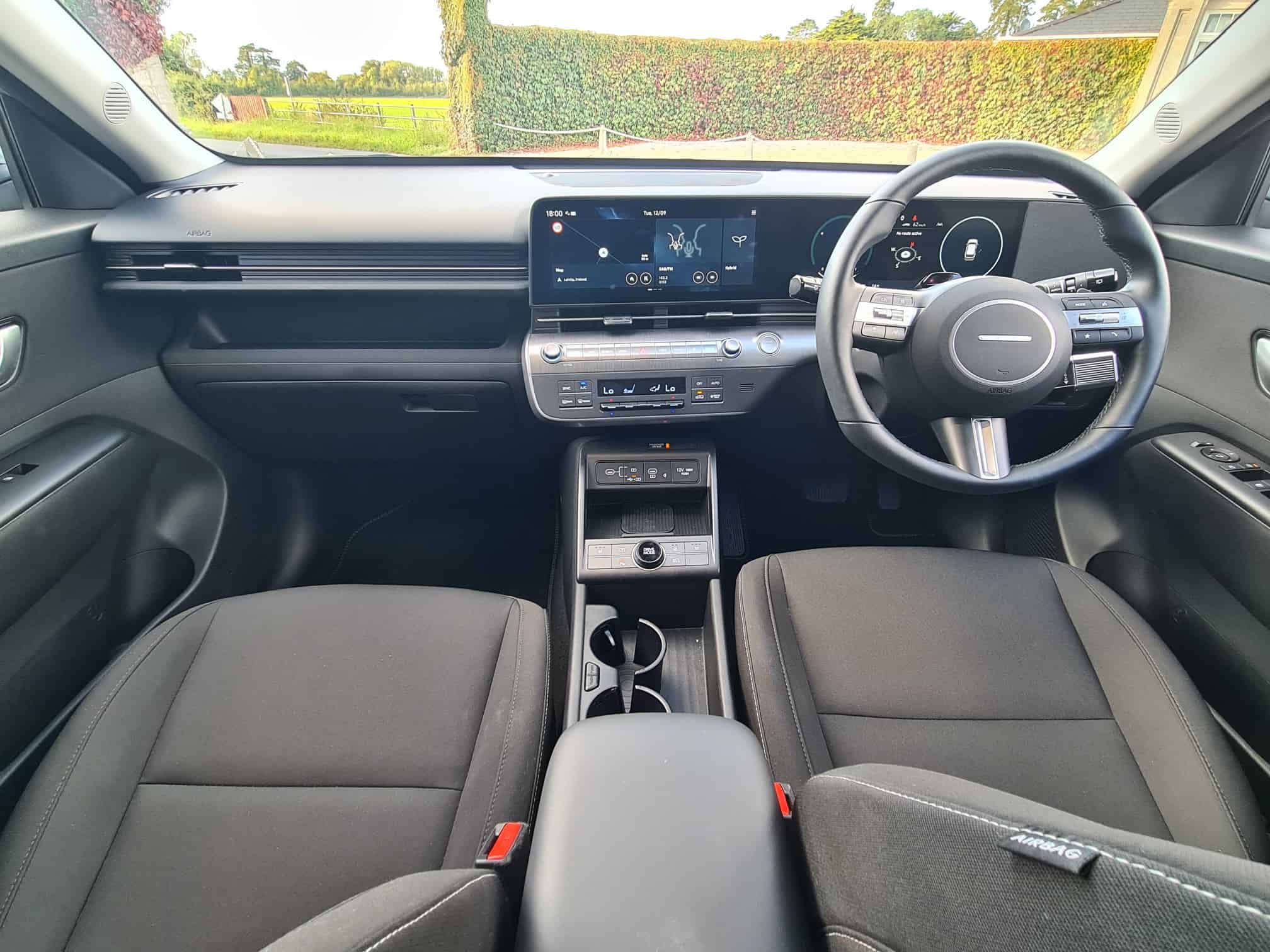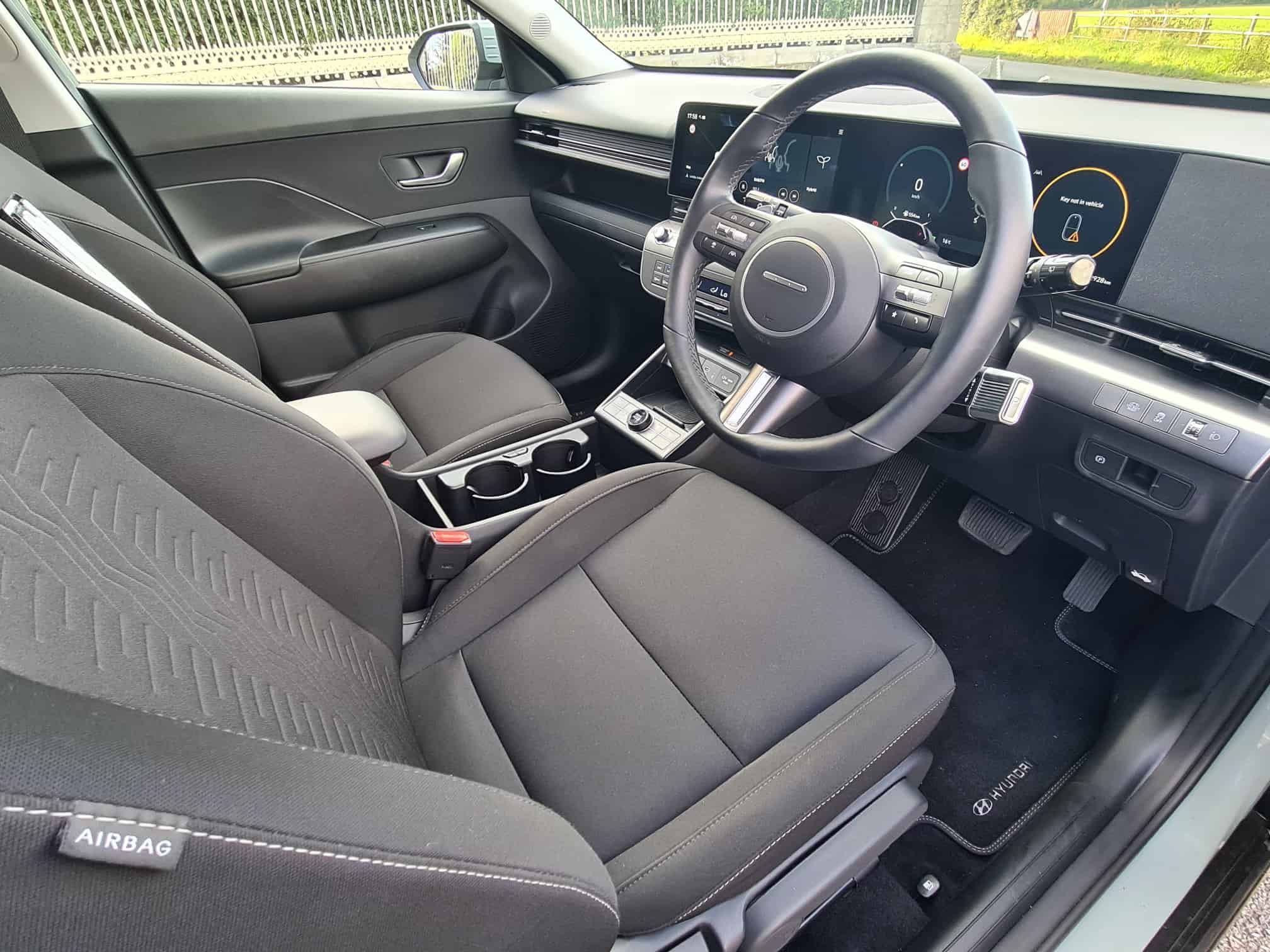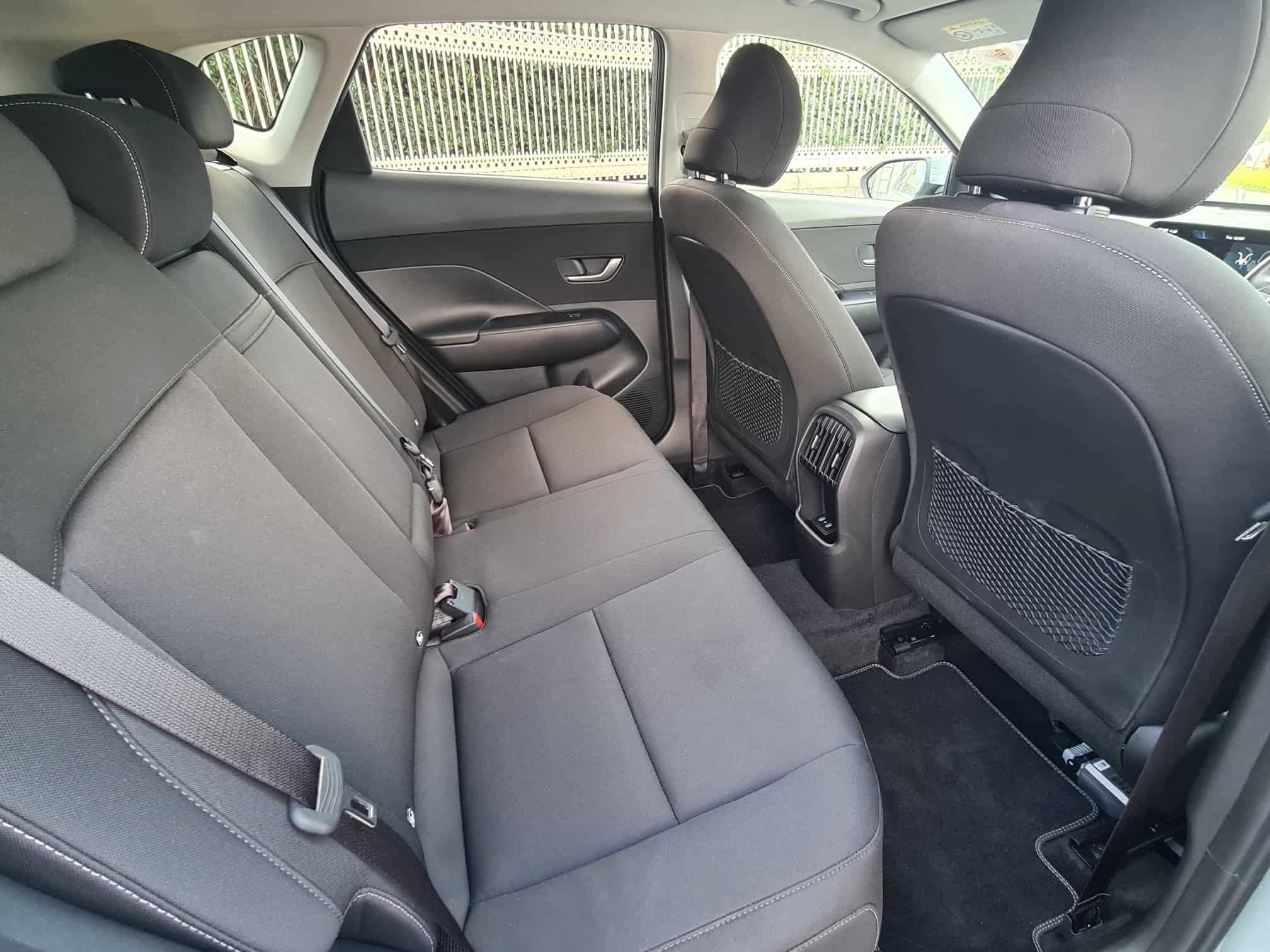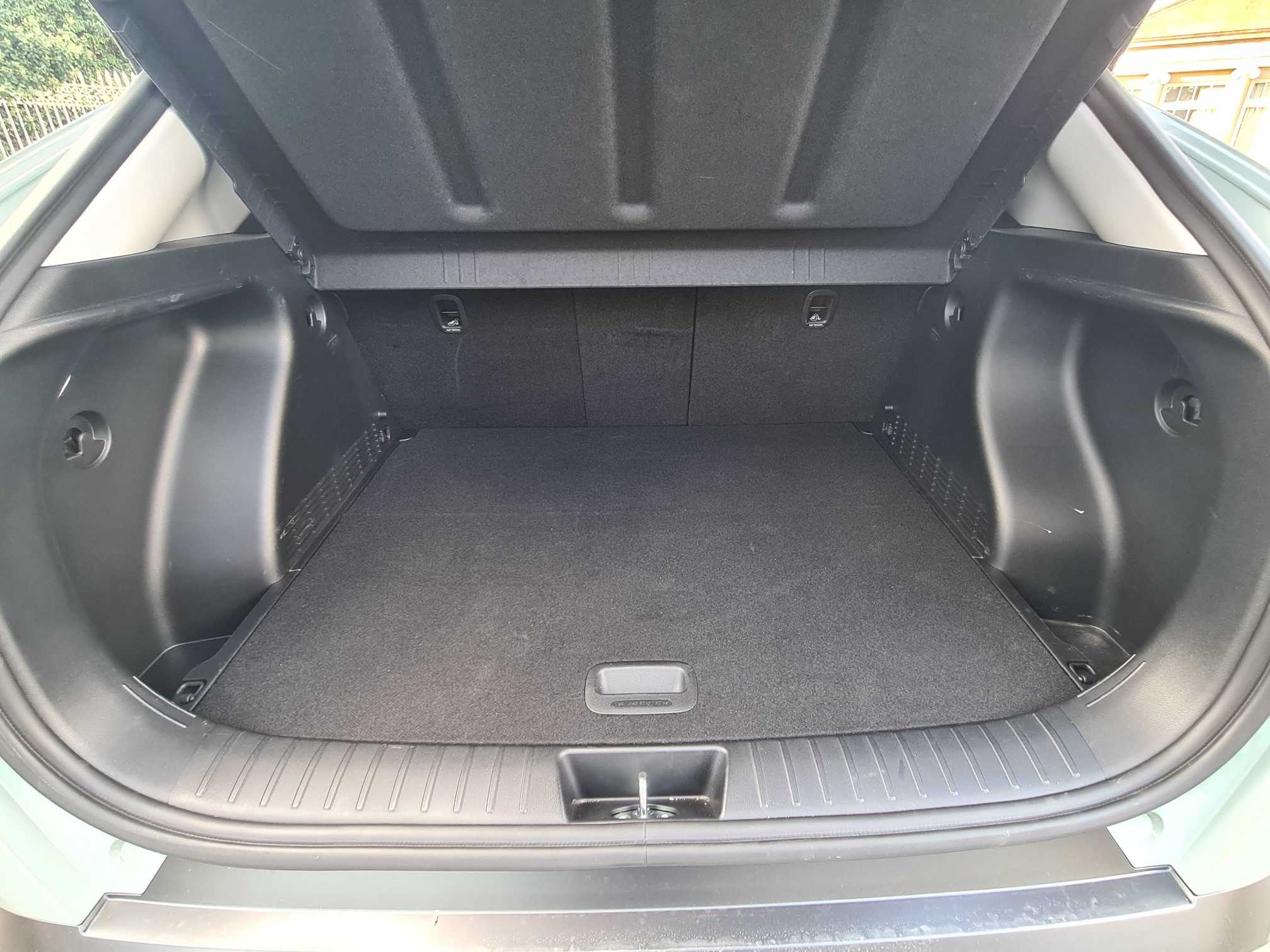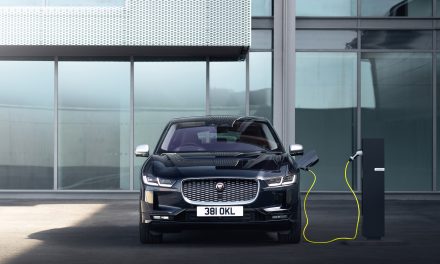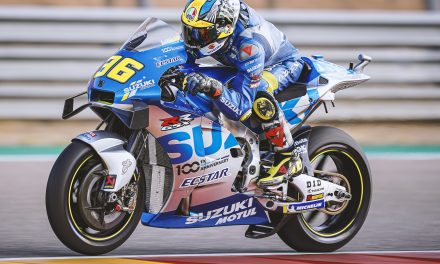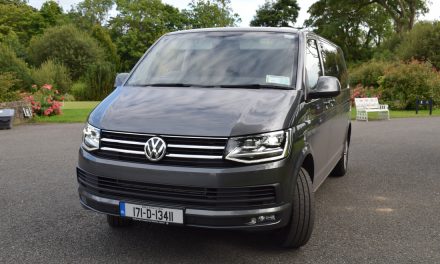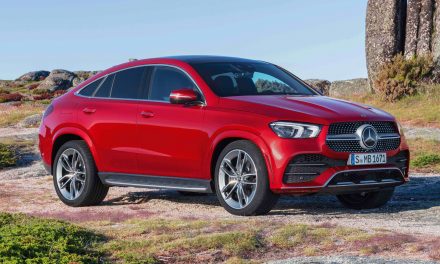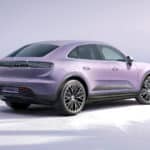
All-New Hyundai KONA Hybrid is Upscaled and More Dynamic.
New Hyundai KONA Hybrid is Upscaled and More Dynamic.
The original Hyundai KONA was launched in Ireland in 2018 and it went on to become the second best-selling car in its category in the intervening years – selling almost as many units as the third and fourth best-selling Compact SUVs in the process. The outstanding success of the original KONA was due to the multiple drivetrain options available (petrol, hybrid and pure electric), offering customers diversity for their driving needs, and these options are continued into the All-New KONA.
Bigger & More Dynamic.
The new KONA is bigger in every area than its predecessor, so it now fits comfortably into the Medium SUV market segment, and is pitched against talented rivals such as the Kia Niro, Skoda Karoq, Mercedes-Benz B-Class and new Honda HR-V. The new KONA is 145mm longer than its predecessor, and this results in greater legroom for all occupants. In fact, it is so spacious in the back now that knee and headroom are nearly at the same level as in Hyundai’s larger Tucson family SUV. The Tucson was also the inspiration for the new KONA in terms of styling, with parametric pixel lights at the front and a slim, full-width light bar. A full-width light bar also features at the rear and it provides the car with a distinctive and ultra-modern look. In a similar fashion to the Tucson, the new KONA features the same kind of sharp lines and solid surfaces in its side profile, and the overall design is truly impressive from every view-point. Boot space in the new KONA is equally impressive, with 466-litres on offer behind the rear seats, and up to 1,300-litres available when the seats are folded flat.
Trim & Engine Options.
Trim levels in the new KONA consist of Signature, Elegance and N-Line, and engine options presently consist of a 1.0-litre T-GDI Manual Petrol and a 1.6-litre GDI Automatic petrol/electric Hybrid. The KONA Electric version is scheduled to arrive in Ireland in late October 2023. The 1.0-litre three-cylinder engine produces 120PS and is mated to a six-speed manual transmission, while the 1.6-litre four-cylinder engine is backed up by an electric motor to provide a combined power output of 141PS, which is sent to the front wheels via a six-speed twin-clutch automatic transmission.
Impressive Standard Equipment.
Key standard features from entry-level Signature trim includes alloy wheels, body-coloured door handles and door mirrors, black side body moulding, rear spoiler with high-mounted stop light, leather steering wheel, automatic climate control, daytime running-lights, LED headlamps with Smart Beam Assist, Rear LED Combination Lights, tinted rear windows, rear-view camera with dynamic guidelines, front & rear cup holders, 40-20-40 split-folding rear seats, Drive Mode Selector, space saver spare wheel, cruise control with smart stop & go, front and rear parking sensors, electronic parking brake with auto hold function, Smart Key with Start Button, a 12.3” Touchscreen with Satellite Navigation & Media Centre, 4” Supervision Cluster with TFT Display, Blue Link Application Connectivity, Bluetooth, Apple CarPlay & Android Auto, 4-speaker audio with front tweeters, 2 USB-C charging ports (front & rear), multiple airbags, alarm with immobiliser, and remote central locking, along with a host of safety and security features to include ABS, DBC (Downhill Brake Control), MCB (Multi Collision Brake), E-Call, ESC, Forward Collision Avoidance Assist 1.5, Hill Start Assist Control, Intelligent Speed Limit Assist, ISOFIX (rear), Lane Follow Assist, Lane Keep Assist, Tyre Pressure Monitoring System, Rear Occupancy Alert, and HAD (Highway Driving Assist). This comprehensive list of standard features is enhanced further in Elegance trim by the addition of heated front seats, heated steering wheel, automatic rain sensors, wireless charging pad, integrated 12.3” TFT supervision cluster, rear privacy glass, 17” alloy wheels, electro-chromatic rear-view mirror, power-folding door mirrors, black roof rails, driver lumbar support and rear passenger vent duct. The flagship N-Line trim also benefits from an N-Line exterior and interior pack, 18” N-Line alloy wheels, and a seamless horizon LED light package. The new KONA’s cabin takes inspiration from its IONIQ 5 sibling, and it looks all the better for it. A 12.3” digital driver’s display (model dependent) sits beside a 12.3” touchscreen infotainment system, both of which look great and are user-friendly too. Many drivers will be happy to hear that Hyundai have retained physical buttons beneath the touchscreen for infotainment shortcuts and a separate climate control system.
Test Car.
My test car was a KONA 1.6 GDI Hybrid Elegance, which was finished in distinctive Mirage Green paintwork. With 141PS and 265Nm of torque available from the petrol/electric hybrid powertrain, the car can sprint from 0-100km/h in 10.9-seconds, and it is capable of fuel consumption as low as 4.7l/100km (60.1mpg) on a WLTP combined driving cycle. When starting or driving at low speed, the electricity stored in the battery powers the electric motor to accelerate in a fuss-free manner. During heavy acceleration, or driving uphill, the electric motor and petrol engine work in parallel to maximise acceleration and minimise fuel consumption. At constant speeds, power is provided by either the petrol engine or the electric motor, whichever is the most energy-efficient in that situation, and when decelerating (through braking or driving downhill, for example) the electric motor operates as a generator and regenerates kinetic energy into electric energy, which is then stored in the battery. Drivers can choose from Eco, Sport and Snow drive modes in order to optimise fuel efficiency, enhance engine performance or access improved traction for winter driving conditions respectively. The paddles behind the steering wheel adjust the level of brake regeneration when in Eco mode, while in Sport mode they enable the driver to take control of the dual-clutch automatic transmission. On the road, the KONA Hybrid feels equally at home on a motorway as it does around town, and the smooth transition from petrol to electric, and back, allows occupants to enjoy the refinement within the spacious cabin. The new KONA’s chassis is set up for comfort, so the ride is relaxing at all speeds, and the handling is safe and predictable. The steering is suitably light and accurate, thereby making car park manoeuvres a simple task, while the standard front & rear parking sensors and rear-view camera also help in this regard.
Verdict, Pricing & Warranty.
The all-new Hyundai KONA is now big enough to comfortably fulfil the demands of a growing family, and it is a well-rounded SUV that is sure to be another big-selling model in Hyundai’s impressive passenger car line-up. Pricing starts at €30,895 for the 1.0-litre T-GDI model, with the 1.6-litre GDI Hybrid priced from €34,795. Annual road tax is €210 and €200 respectively. A five-year, unlimited mileage warranty comes as standard, along with the benefit of Roadside Assistance for five years, and a free vehicle health check for five years too.
Visit www.hyundai.ie for further information.

